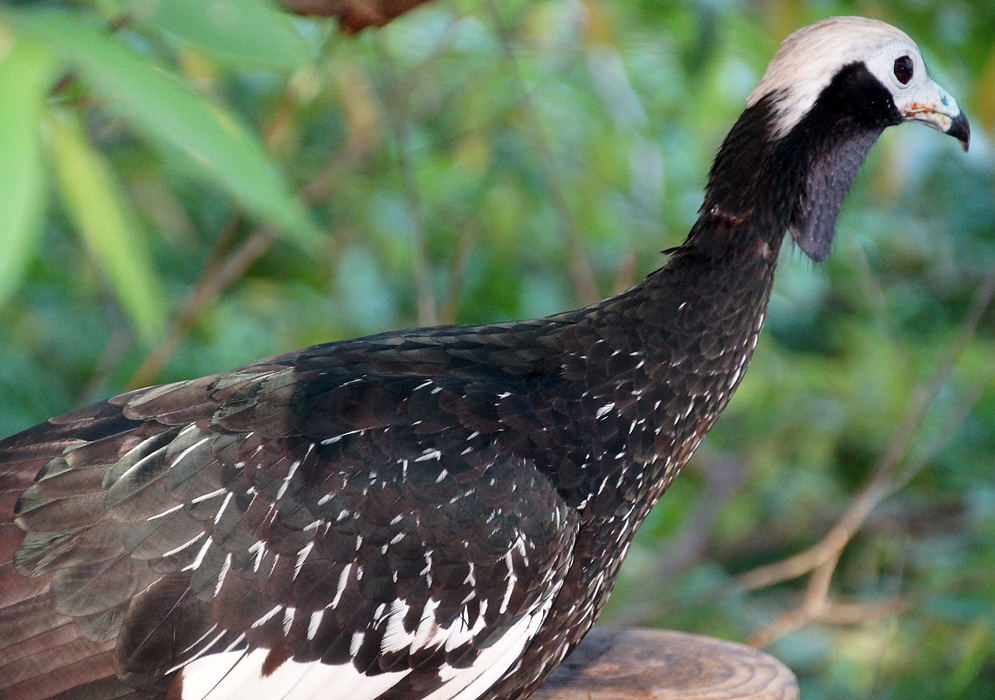This post has 11 Simple Fields-fields attached. Show fields.

The Blue-throated Piping Guan is found in Bolivia, Brazil, Colombia, Ecuador, the Guianas, Peru, and Venezuela. The bird prefers humid tropical forests of the Amazon Basin, including terra firme, várzea, gallery, and semi-deciduous types. In the Guianas, it is also found in less forested coastal areas. Typically, this species is found near rivers and at varying elevations, up to 3,600 feet in Peru. The Blue-throated Piping Guan is known for its striking appearance, it measures about 24 to 27 inches in length and weighs around 2.14 to 2.98 pounds. The bird exhibits a predominantly blackish plumage with a greenish-blue gloss, especially on the shoulders, wings, and tail. Distinctive features include a white forehead, crown, and nape, white fringes on breast feathers, and red legs. The species shows no significant sexual dimorphism, with both sexes appearing similar. An interesting aspect of their diet is geophagy, the consumption of soil or clay, which is thought to aid in digestion and provide minerals. The Blue-throated Piping Guan is listed as "Least Concern". However, its population is suspected to be decreasing due to habitat loss. The species is also used for food and in the pet trade, which can impact its population numbers. The Blue-throated Piping Guan is mostly sedentary, possibly making local or elevational movements based on fruit availability. Its diet primarily comprises fruits and leaves, with a particular preference for figs. The bird is known to forage in pairs or family groups during the nesting season and may form flocks of up to 30 birds outside this period. During the breeding season, the guan is notably vocal, producing a distinctive "piping" call at dawn, consisting of slow, high-pitched whistles. It is a terrestrial bird, primarily living on land, and is oviparous, meaning it lays eggs with little to no embryonic development within the mother. The species is precocial, with its young being relatively mature and mobile from birth.



